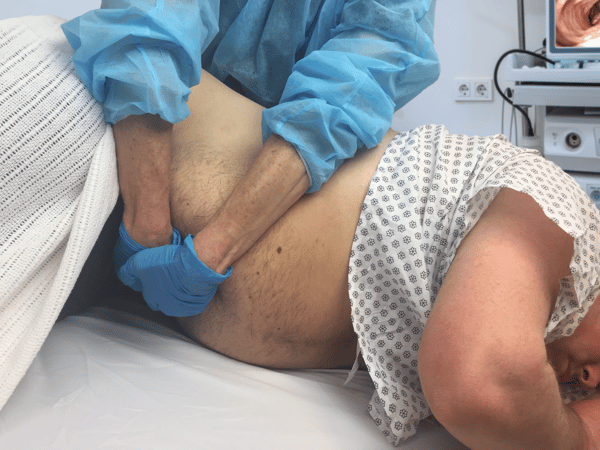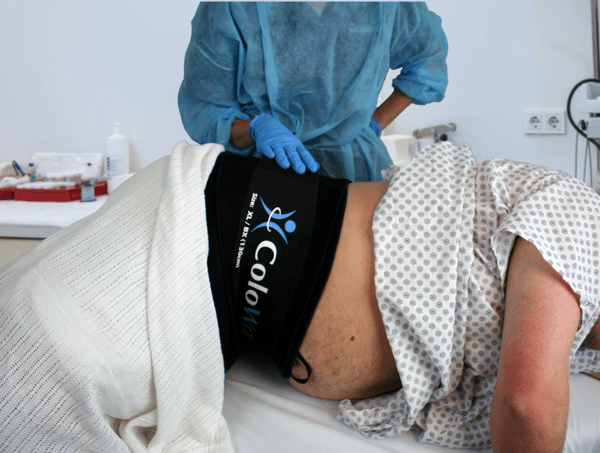Endoscopy Nurses & Technicians: Keys to Colonoscopy Success
by Larissa Biggers, on March 27, 2019
What Is Endoscopy?
For those not immersed in the world of gastroenterology (GI), endoscopy refers to nonsurgical procedures that allow a physician to examine the digestive tract. In these procedures, a flexible tube with a small light and camera attached (an endoscope) is inserted into the mouth or the rectum. Physicians can then inspect, take pictures, and perform therapies like removing polyps and taking biopsies. The two most common endoscopic procedures are 1) upper endoscopy, which looks at the first part of the small intestine and 2) colonoscopy, which examines the lower intestine (colon).
What Do Endoscopy Staff Do, Anyway?
Among many other duties, endoscopy nurses generally are responsible for initiating sedation, monitoring patients during a procedure, and providing post-procedure care and instructions. Endoscopy technicians typically prepare and maintain endoscopy equipment, assist the physician with specimen collection, and clean and reprocess scopes, although duties can overlap between the two roles. In addition, both nurses and technicians perform patient-handling duties as a routine part of assisting with colonoscopy. More on that in a minute.
How Does Colonoscopy Work?
During colonoscopy, the scope is inserted into the patient’s rectum and advanced all the way to the cecum. The physician inspects the entire colon and removes any abnormal growths (polyps), thus treating and preventing colorectal cancer (CRC). More than 15 million colonoscopies are performed each year in the United States.
How Do Endoscopy Staff Help with Colonoscopy?
Despite its immeasurable benefits for patients, colonoscopy can be challenging for both physicians and staff. This is because the colon is not static; it moves. As a result, when the endoscopist pushes the scope forward, the tip doesn’t always advance. Instead, it can stretch and distend the colon outward. This problem is known as looping, and it is the primary cause of incomplete procedures and patient discomfort, among other issues. Therefore, there is a strong incentive to mitigate looping as much as possible.
Watch a video about looping
Along with physician scoping techniques, the usual way of addressing looping the application of manual pressure to the patient’s lower abdomen. This splints the colon (i.e., holds it in place) so that pushing the scope advances the tip forward, instead of pushing the colon outward.

Looping in the sigmoid colon, looping mitigated with abdominal pressure
If manual pressure fails to prevent looping, the patient is typically rolled from his or her side to the back, or vice versa. Changing the position of the patient often changes the position of the colon and allows the scope to advance.
Why Is Colonoscopy Risky for Endoscopy Staff?
Almost universally, the responsibility for providing counter pressure and repositioning patients lies with endoscopy nurses and technicians. These maneuvers are widely accepted as a routine part of the procedure, but they can cause physical stress for staff, especially when performed on obese patients or patients for whom sustained pressure is required.
In one study, nurses indicated that when abdominal pressure is required, they spend an average of 6.3 minutes per colonoscopy applying it. In three recent studies involving over 600 endoscopy nurses, more than half reported suffering at least one musculoskeletal injury, and over 24% indicated that they were forced to miss work to recover.

What Can Be Done?
There are educational resources that can help endoscopy staff minimize risks while handling patients. Additionally, the Society for Gastrointestinal Nurses and Associates (SGNA) offers courses on applying abdominal pressure. But even when best practices are followed, injuries can occur. Products that eliminate or greatly reduce the need for patient handling might be the best way to prevent injury.
ColoWrap is a compression device worn by patients during colonoscopy. It is specifically designed to splint the colon and to prevent looping during colonoscopy. Numerous published studies have evaluated the effectiveness of ColoWrap and suggest that use of the device is associated with a 40 to 90% reduction in the need for manual abdominal pressure and a 50 to 100% reduction in the need for patient repositioning.

Thank Your Endoscopy Staff
This GI Nurses and Associates Week thank an endoscopy nurse or technician for all they do behind the scenes to make every colonoscopy as effective as possible. And tell them about ColoWrap; it just might save their back (and their wrists, shoulders, and neck).
Download a free whitepaper on endoscopy staff injury.



